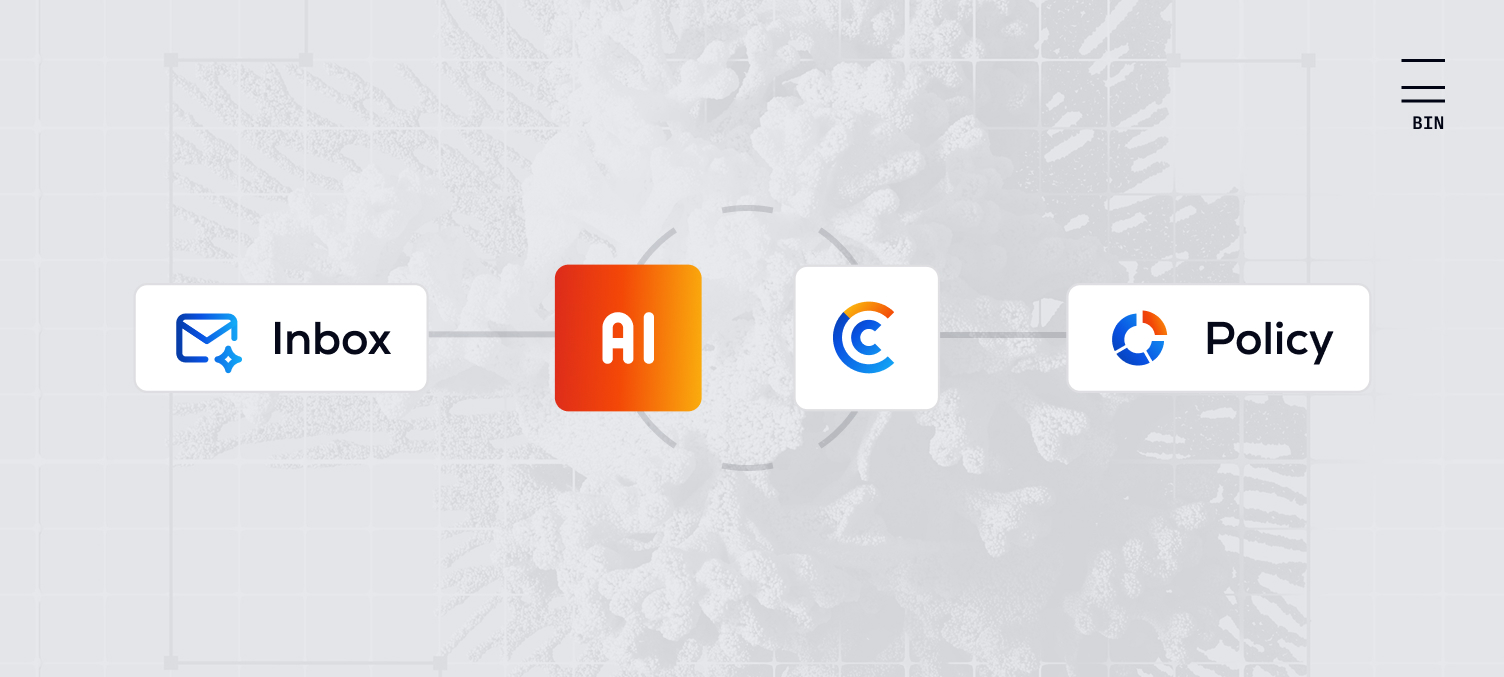In the London Market, where underwriting workflows depend on countless emails and document attachments, managing submission data remains a major operational challenge. A single placement can generate dozens of emails, hundreds of attachments, and multiple rounds of back-and-forth between brokers, underwriters, and coverholders. Every day, thousands of Market Reform Contracts (MRCs), schedules, and endorsements pass through inboxes, often requiring manual extraction, validation, and re-keying of critical information.
Buckhill’s AI ingestion capabilities aim to streamline this process. By combining advanced document understanding with the C2MS workflow architecture, underwriters and brokers can move from fragmented inboxes to structured, auditable data pipelines, reducing manual effort and accelerating the journey from submission to bound policy.
The Challenge: From Submissions to Structured Data
Despite progress in digitisation, the submission process in insurance still relies heavily on manual effort. Emails containing MRCs, bordereaux, and supporting documentation are received in inconsistent formats - often mixed with conversation threads and follow-up files.
Underwriters and operations teams spend hours locating the latest version, extracting key fields, and re-entering data into internal systems or policy platforms. This repetitive manual work introduces the possibility of human error and delays quote turnaround times in an already high-stress and fast-paced environment.
The Solution: AI-Driven Ingestion
At its core, AI-powered ingestion automates the process of reading, interpreting, and structuring data from complex unstructured sources such as emails and MRCs. Unlike traditional data extraction tools that rely on rigid templates, Buckhill’s models use contextual understanding to identify key entities: insured names, limits, deductibles, layers, clauses, and more, irrespective of formatting or layout.
This enables submissions to be ingested directly from Outlook or shared mailboxes into C2MS, automatically generating draft records with minimal human intervention. Attachments are classified, relevant data is parsed and validated, and underwriters receive a complete submission ready for review, rather than a series of unstructured PDFs.
How It Works in Practice
Email and Document Ingestion
The pipeline monitors submission inboxes and processes new messages automatically. It identifies whether the content relates to new business, renewal, or endorsement, and extracts relevant metadata such as broker, insured, and product type. Importantly, it can also identify an existing submission and understand an email conversation, providing a delta of updates.
Contextual Parsing and Validation
Using retrieval-augmented generation (RAG) and trained data models, the system reads MRCs and schedules line by line, matching extracted details to policy fields in C2MS. Built-in validation ensures data accuracy and flags inconsistencies for manual review when required.
Automated Record Creation
Once validated, structured data flows directly into C2MS, where it can trigger downstream workflows such as rating and pricing, document generation, and approval routing. This ensures compliance and complete auditability of every ingestion event.
Keeping Humans in Control: Human-in-the-Loop and Explainable AI
While automation drives efficiency, human oversight remains central to Buckhill’s AI design philosophy. Our ingestion workflows include a human-in-the-loop mechanism; meaning that if the AI model cannot make a confident decision, it automatically escalates the case for manual review. This ensures the system never ingests incomplete or inaccurate data, maintaining data quality and governance across every submission.
Complementing this is our use of Explainable AI (XAI). Rather than acting as a “black box”, XAI allows underwriters and other stakeholders to understand how the AI arrived at a particular conclusion. Every prediction, extraction, or classification can be traced back to its source context. This not only supports auditability and regulatory confidence but also gives our teams the ability to fine-tune models over time, continually improving performance while maintaining transparency and control.
The Result: From Inbox to Policy in Minutes
By integrating AI ingestion directly into C2MS workflows, Buckhill enables underwriters and brokers to move from unstructured submissions to actionable data in record time.
Instead of searching, copying, and formatting, underwriters can focus on analysis and client engagement - the work that truly adds value.
A Foundation for the Future
This capability represents a foundational step in Buckhill’s broader vision for AI-enabled insurance operations. By ensuring that every submission begins with clean, structured, and transparent data, we’re laying the groundwork for smarter automation across the policy lifecycle - from quote to bind, through to claims and reporting.
AI is not replacing expertise; but rather amplifying it, giving underwriters and brokers the tools to operate faster, with greater accuracy and confidence, in a market that demands both speed and precision.






